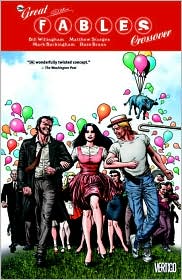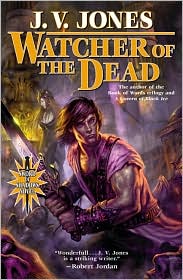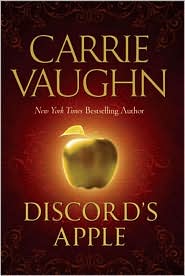The Science Fiction Writers of America presented this year’s round of Nebula Awards and a few unrelated awards over the weekend in Cape Canaveral. The winners were:
· Novel: Paolo Bacigalupi for The Windup Girl
· Novella: Kage Baker for The Women of Nell Gwynne’s (posthumously)
· Novelette: Eugie Foster for “Sinner, Baker, Fabulist, Priest: Red Mask, Black Mask, Gentleman, Beast”
· Short Story: Kij Johnson for “Spar”
· Ray Bradbury Award: Neill Blomkamp and Terri Tatchell for District 9
· Andre Norton Award: Catherynne M. Valente for The Girl Who Circumnavigated Fairyland in a Ship of Her Own Making
· Damon Knight Grand Master Award: Joe Haldeman
· Author Emeritus: Neal Barrett Jr.
· SFWA Service Award: Vonda N. McIntyre, Keith Stokes
· SFWA Solstice Award: Tom Doherty, Terri Windling, Donald A. Wollheim (posthumously)
All of these awards deserve some talk, but I’m going to narrow my focus now to the Andre Norton Award because this year’s winner was such a game changer. A few years ago Valente had just started making a living as a full time writer when her husband lost his job unexpectedly due to the recession. A few months later, she decided to be innovative and daring. She announced that she was writing a book that would only appear online, for free, with a donation button so that her readers could pay what they felt like for it, hoping to add at least a little extra cash to help pay the bills. There was no editor involved, no agent, no publishing house. Just Valente and her audience. These sorts of projects are known as crowd funding, and until now they’ve received very little attention or recognition. Not only did Valente find a significant audience for her work online, but she just won the premiere award for teen/young adult science fiction and fantasy in the country with it. It is believed that hers is the first such work to win any major literary award.
Not only is it interesting to see a crow funded project like this rewarded, but it’s also one of the rare times a self published work in any medium has been so successful and rewarded. Valente, whether she set out to or not, has proved that the publishing world is changing. Now, she herself has said that she does not think that agents, editors, and publishing houses are going to go away because the fill very needed roles. But Fairyland has illustrated just how powerful the web is. I should also point out that Valente had much better odds of pulling this off than the average joe doing crowd funding. Valente was already a traditionally published author with several books under her belt when she started this project. She had an established blog and a community of fellow bloggers to rely on to spread the word of her new book. Most people don’t have that.
And while I’m going on about how publishing is changing, I’d also like to look at two of the Solstice Award Winners, which honors those who have had a significant impact on science fiction and fantasy. Tom Doherty is the founder, President and Publisher of Tom Doherty Associates, LLC, which publishes books under the imprints Tor, Forge, Orb, Starscape and Tor Teens. Now a subsidiary of Holtzbrinck Publishers, Tor is one of the largest publishers of SF/F, and has published more award winners in this category than any other house. Mr. Doherty previously worked at the publisher at Ace, another premiere science fiction/fantasy publishing house. Donald A. Wollheim helped develop Ace as a paperback science fiction house until starting his own house, DAW. Both Ace and DAW are now owned by the Penguin Group. As an editor, Wollheim worked with such giants as Marion Zimmer Bradley, Andre Norton, Ursula K. Le Guin, Phillip K. Dick, Robert Silverburg, and Jack Vance to name a few. As a publisher, he started the careers of C. J. Cherryh, Tanith Lee, Jennifer Roberson, and Tadd Williams, again, to name a few. Most infamously, he published an unauthorized edition of Tolkein’s Lord of the Rings while at Ace. While later found to be illegal, this edition popularized Tolkein in the United States and helped to create a huge fantasy audience. Mr. Wollheim passed away in 1990. His daughter Elizabeth Wollheim is a current publisher with DAW.
Valente is also up for a Hugo award this year for her traditionally published novel Palimpset. Bacigalupi’s Windup Girl and Cherie Priest’s Boneshaker (which I’ve reviewed here) are also nominated. Those awards are currently in the voting process, and will be announced at Aussiecon 4 in Melbourne, Australia in September. The Hugo is award by the World Science Fiction Society.
The Girl Who Navigated Fairyland in a Ship of Her Own Making will be published by Feiwel and Friends in May 2011, and upon the request of the publisher, the final act is no longer available online.


















